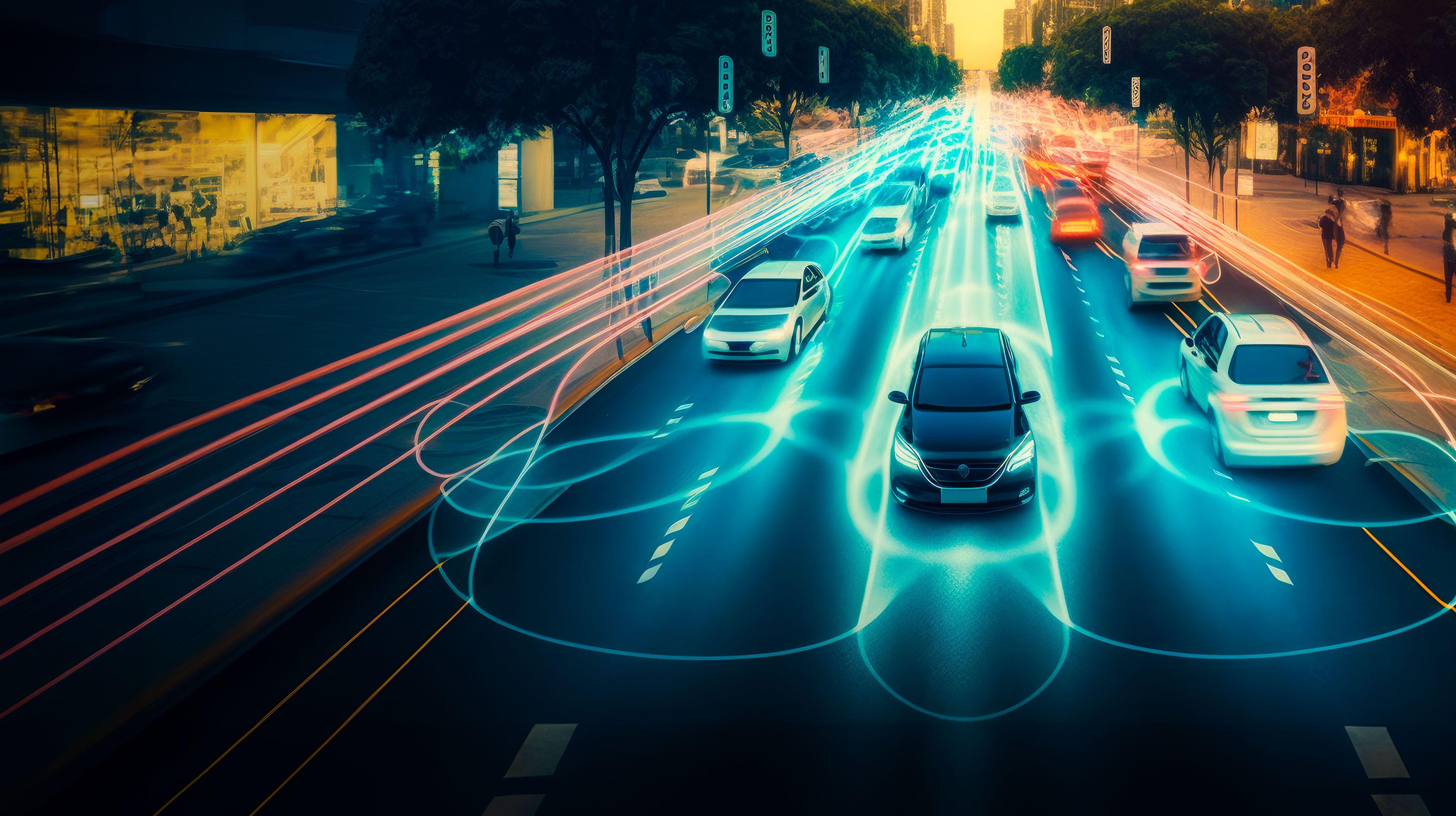
Who needs AI developers in 2024?
- In 2024, AI specialists are in high demand across all sectors due to the widespread integration of AI technologies by businesses. Enterprises rely on AI developers to implement and optimize AI solutions for various applications, driving the need for skilled professionals.
- Dynamic Market Growth: The AI market's value soared to approximately $136.55 billion in 2022 and is forecasted to skyrocket to $1,811.8 billion by 2030. This exponential growth underscores the expanding opportunities and demand for AI developers in the foreseeable future.
- Essential Skills for AI Developers: Proficiency in programming languages like Python, Java, and C++ is essential for AI developers to create and deploy effective AI solutions. Additionally, expertise in data science, including machine learning algorithms and data analysis, is crucial for mastering AI development.
- Transformative Trends and Technologies: Significant advancements are expected in sectors such as healthcare, autonomous vehicles, and emerging technologies like quantum computing and the Internet of Things (IoT). These innovations are reshaping the AI landscape, presenting new challenges and opportunities for AI developers to pioneer groundbreaking solutions.
The answer is simple: everyone. Enterprises are increasingly relying on AI technologies and implementing them into their workflow, which translates into the demand for AI programmers. This article discusses the importance and future of AI developers in an innovation-driven market, and even a bit of history on how AI came to "life" like Frankenstein’s Monster.
Historical context
If someone thinks that the idea of artificial intelligence appeared on the front pages of digital newspapers only a few years ago and that people only asked the question of whether androids dream after Philip K. Dick's book, published in 1968, he is seriously mistaken. Rockwell Anyoha reminds us that at the beginning of the 20th century, Tin Man appeared in "Wizard of Oz", and Fritz Lang in "Metropolis" created Maria - a humanoid robot. It is also difficult not to mention Karel Capek, who introduced the word "robot" into literature for the first time in 1921. Art has always been able to stimulate the imagination and had the gift of creating ideas that scientists later put into practice.
However, the 1950s marked the beginning of the development of artificial intelligence. In 1950, Alan Turing published the text "Computing Machinery and Intelligence" and asked the question of whether machines can think. This question whetted the appetite, but could not be properly researched - computers were not yet able to store commands, i.e. "remember" their actions. Since then, more and more has happened in the field of AI, and the real boom occurred in the years 1980-1987. It was then that most projects were financed and investments were made in the development of Deep Learning techniques and Expert System technologies - they were and are responsible for computers learning from their mistakes and learning to make independent decisions.
The following years are called AI Winter - financing was frozen, but this did not stop the release of, for example, Deep Blue, which defeated chess champion Gary Kasparov, or the introduction of the first Roomba to the market in the 1990s. Since then, AI technologies have been highly developed and have led humanity to the current period, i.e. Artificial General Intelligence, the development of OpenAI and the discussion on whether AI will help people or rather take away their jobs.

The AI market in numbers
AI technologies and solutions based on it are developing rapidly - that's a fact. In 2022, the value was estimated at $136.55 billion in 2022. The market assumes that in 2024, up to 67,200 companies dealing with this technology will be established, which will certainly contribute not only to the development of the industry but also to changes in the labour market.
Forecasts indicate a significant expansion of the artificial intelligence market - the compound annual growth rate (CAGR) in 2023-2030 is expected to be 37.3%. By 2030, the market is expected to reach an astounding $1,811.8 billion, according to GrandViewResearch.
However, it should be noted that the development of AI is very dynamic and the above numbers are only predictions that can be revised very quickly.
Predictions and trends
Significant developments in the field of AI development are expected in the future. Some key areas of progress include:
- Technology trends. The popularity of AI technology development in the healthcare industry and autonomous vehicles is growing. For example, IBM uses Deep Learning to develop technology that detects the early stages of diabetic eye disease. Also, the use of deep neural networks for speech identification has resulted in significant improvements over the current state of speech and voice recognition;
- Supplier trends. The supply chain generates vast amounts of data that can be managed by generative AI, which can produce insights and solutions.
- Regulatory trends. Probably the hottest topic, i.e. laws and regulations related to AI, including cybersecurity and copyright.
The future of artificial intelligence is transforming. And although this technology offers unlimited possibilities and potential, its development also brings challenges. These include, for example, ethical issues related to privacy and surveillance, but also responding to bias and discrimination in AI technologies.
AI developer's areas of working
The above factors – the historical context and the market – clearly show that AI technologies are something that, firstly, has been developing since the beginning of the 20th century, but it is also a technology from which it will be impossible to escape.
The development of machine learning, deep learning, and natural language processing means that the demand for data science experts or programmers who know backend languages such as C++ or Python is increasing every year. The spread of AI technology challenges developers to improve their software development processes. Currently, AI programs, such as ChatGPT or the built-in AI tool for GitHub, can generate code, even improve the quality of the code or test and debug it.
The rapid evolution of artificial intelligence technologies, in the context of the development of AI engineering, has revolutionized the role of their contributors, expanded their responsibilities and provided a thriving career landscape in the field of artificial intelligence development.

AI developers through sectors
Artificial intelligence has expanded into many areas. Although the most visible sectors of AI implementation include programming (GitHub Copilot), graphic design or writing, it is used in many economic sectors such as manufacturing, automotive (e.g. autonomous vehicle navigation), healthcare, and creative industries. The highest levels of AI technology adoption have been observed in the following industries:
- finance
- tech
- telecom
- business
- legal
- education
The increasing integration of AI technologies across these sectors has fuelled the global demand for AI talent, underscoring AI’s transformative potential within businesses.
Essential technical AI developer's skills
Several technical proficiencies are vital to excel in AI development. A strong command of programming languages is a must as these languages serve as the primary means for building and deploying machine learning models, and neural networks, and handling data.
Python, in particular, serves as the predominant programming language for AI and ML, outpacing Java in popularity due to its scalability, exceptional performance in machine learning, and robust library ecosystem. Other languages such as Java and C++ also play a crucial role in AI development due to their stability, ease of debugging, and suitability for implementing various algorithms, including those utilized in machine learning and neural networks.
Programming languages
Several languages have already been mentioned, but it is worth presenting which languages AI developers use in their everyday work. The most popular are C++, Python and Java - these languages are also developed in terms of libraries and frameworks that significantly influence machine learning and deep learning, and consequently the development of artificial intelligence.
As in other languages and the above-mentioned programming languages, frameworks and libraries have been created (e.g. TensorFlow, PyTorch) that facilitate work, improve productivity and effectively facilitate the implementation of complex algorithms in projects.

Data science expertise
The development of artificial intelligence is largely based on data analysis. Developers are sometimes required to be data analysts or work with data analysts in, among others, data areas such as:
- Creating machine learning algorithms that process input data and use statistical models to predict the results provided by the analyst;
- Cleaning raw data to reduce errors such as duplicate entries, filling and managing missing values, and converting data to the appropriate type and format;
- Standardization of data into appropriate formats and their analysis.
The above skills analyse large datasets and discover patterns, detect anomalies and build predictive models.
Diving into the role of AI developers
In the technology industry, artificial intelligence creators have created a unique and significant niche that is growing and popularizing every month. Algorithmics, hated by computer science students, is coming back into favour - thanks to this field, it is developing, among others, machine learning and its subfield of deep learning, which aim to imitate the human decision-making process.
AI technology is built on data analysis. That is why it is so important to perform statistical analysis, extract patterns, find gaps in data sets or notice all deviations from the norm. It is also data analysis that allows us to build solutions to business problems.
By setting clear project goals, collecting the right data, and selecting the right artificial intelligence techniques, AI developers can create systems such as:
- Robotic process automation (RPA) for streamlining repetitive data tasks;
- Chatbots and digital assistants for interactive roles;
- Facial recognition systems for identification purposes;
So far, most AI solutions involve optimizing work in corporations, which involves reducing repetitive, and therefore tedious and tiring activities.
AI Engineer vs ML Engineer
AI Engineers cover a wider range of technologies that can include both machine learning and other branches of AI such as natural language processing (NLP), image processing, robotics, etc. On the other hand, Machine Learning Engineers mainly focus on the design, implementation and maintenance of systems based on machine learning algorithms. This includes the development of predictive models, classification models, data analysis and other machine-learning techniques.
Although the scope of these professions differs, what is certainly similar is the knowledge base and skills that such engineers should have. They must have a wide range of skills, including knowledge of various branches of artificial intelligence, programming skills, mathematics, and algorithms. In machine learning, more attention is focused on algorithms, mathematics with particular emphasis on statistics and probability theory, and on creating data models.
The future of emerging technologies and AI development
Emerging technologies are having an impact on the development of AI. Quantum computing, for instance, is revolutionizing AI development by improving its speed, efficiency, and accuracy, enabling faster processing and the ability to solve complex optimization problems.
The Internet of Things (IoT) also plays a significant role in AI development by providing the data and connectivity required for AI algorithms to analyze and predict. AI enriches the potential of IoT by incorporating human-like awareness and decision-making into the environment, thereby enhancing efficiency and productivity.
Summary
To sum up, the landscape of artificial intelligence development in 2024 is dynamic, shaped by the rapid development of technology and the growing demand for qualified specialists. Technology that was only imaginary in the 1920s now causes panic that artificial intelligence will increase unemployment. However, it is worth quoting Ioana Teleanu, who stated that "AI won't replace us, but the person using AI will". At the same time, she adds that AI technologies cannot replace human emotions and critical thinking, but one must be prepared to change the form of work.
Frequently Asked Questions (FAQ)
What languages does the AI developer code in?
Java, Python, and R are the most commonly used programming languages in AI development. Additionally, skills in cloud computing and soft skills such as problem-solving and collaboration are also crucial.
MakoLab. Connecting the skies and Earth
References
- Aashika Jain, Rashi Maheshwari, Top AI Statistics And Trends, Forbes
- Alan Turing, Computing machinery and intelligence, Mind 49: 433-460
- Alex Georges, Demystifying Data Science, AI, and Machine Learning Roles, MentorCruise
- Al-Fraihat, Dimah & Sharrab, Yousef & Alzyoud, Faisal & Qahmash, Ayman & Maaita, Adi, Speech Recognition Utilizing Deep Learning: A Systematic Review of the Latest Developments, Human-centric Computing and Information Sciences
- Bernard Marr, 5+ Generative AI Writing Tools Everyone Should Know About, Forbes
- C3 AI, Data Cleansing
- Camren Browne, The 10 Best AI Tools for Graphic Design, Career Foundry
- Codecademy Team, History of Chatbots, Codecademy
- EY Global, How to navigate global trends in Artificial Intelligence regulation, EY
- IBM, Deep Blue
- IBM, What is deep learning?
- ICT, Artificial Intelligence (AI) Market, Precedence Research
- Igor Wojnicki, Expert systems concept, agh.edu.pl
- Jeremy Hsu, AI chatbots use racist stereotypes even after anti-racism training, NewScientist
- Karel Capek, R. U. R. (ROSSUM’S UNIVERSAL ROBOTS). A Fantastic Melodrama in Three Acts and an Epilogue, Project GutenbergOffering (Hardware, Software, Services), Technology (ML, NLP, Others), Application (Demand Forecasting, Others) Deployment Mode, End-use Industry (Manufacturing, F&B, Retail, Others) & Geography, AI in Supply Chain Market, Meticulous Research
- Rockwell Anyoha, The History of Artificial Intelligence, SITN. Science In The News

Katarzyna Warmuz
Content Marketing Specialist




